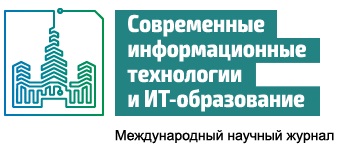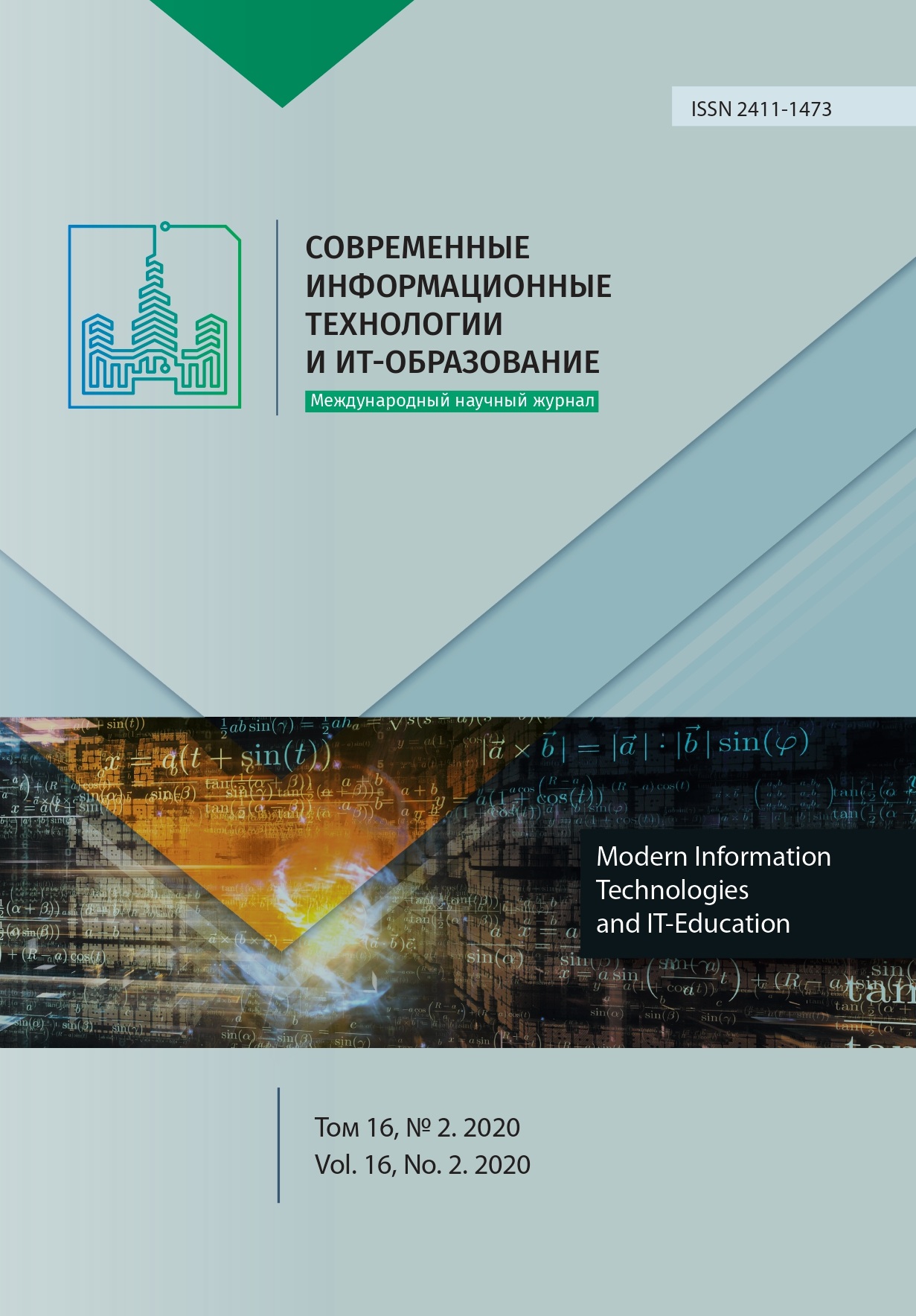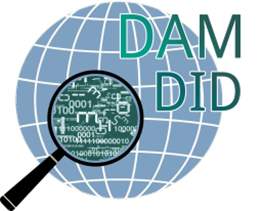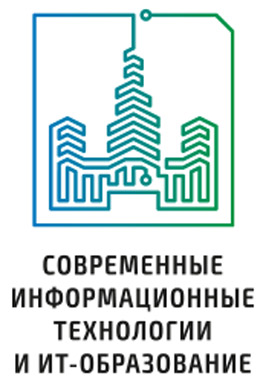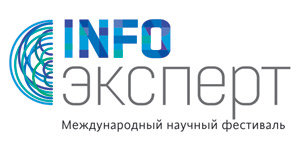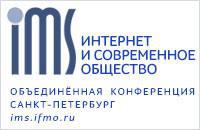Межъязыковая омонимия как источник коммуникативного барьера при чтении с губ иноязычных слов (с позиции носителя русского языка)
Аннотация
Из всех воспринимаемых человеком звуков самыми важными для него, безусловно, являются звуки речи, обеспечивающей коммуникацию с другими людьми. Нарушение в результате потери слуха речевого общения среди носителей одного или разных языков может привести к социальной изоляции. Необходимым условием интегрирования человека с нарушениями слуха в общество слышащих является его стремление улучшить свою способность визуального восприятя речи, т.е. чтения её с губ говрящего. Визуальное восприятие речи по артикуляции говорящего является эффективным, но сложным для людей способом общения. Это объясняется сопровождением данного процесса рядом проблем, к числу источников которых относится наличие в речи омонимичных слов. Формальное сходство фонетической и артикуляционной оболочек слов с разными значениями является обманчивым и предполагает их взаимозаменяемость, что искажает смысл сказанного. Статья посвящена явлению лексической омонимии как барьеру на пути речевой коммуникации при чтении с губ. Исследуются лексические омонимы внутриязыкового и межъязыкового характера в сопоставлении речевых элементов русского языка и ряда иностранных языков. Проведён обзор словарей наиболее распространённых языков с целью выявления в них межъязыковых омонимов, схожих со словами русского языка фонетической и артикуляционной оболочками. Рассматриваются вопросы формального сходства и различий на лексическом уровне омонимов сравниваемых языков. Приведён пример вероятности правильного распознавания омонимичных слов русского языка по их графемам, фонемам и виземам. Обращено внимание на проблему чтения с губ внутриязыковых омонимов на примере русского языка и межъязыковых омонимов в процессе речевой коммуникации носителей разных языковых систем. Дано краткое описание мультимедийной программы по обучению пользователей навыку чтения с губ, выявлению нюансов слов со схожими виземами разных языковых систем и контролю правильности их распознавания.
Литература
[2] Sadokhin A.P. Vvedeniye v teoriyu mezhkul'turnoy kommunikatsii [Introduction to the Theory of Intercultural Communication. 2nd ed. Moscow: KnoRus; 2017. Available at: https://elibrary.ru/item.asp?id=27643903 (accessed 20.07.2020). (In Russ.)
[3] Gomon D.N. Omonimiya kak simmetriya morfem [Homonymy as Symmetry of Morphemes]. In: G. I. Shevchenko, G. I. Tananushki (ed.) Studia philological. 2015; (8):19-25. Minsk. Available at: http://graecolatini.bsu.by/htm-articles/studia-8-2015/gomon-2015.pdf (accessed 20.07.2020). (In Russ.)
[4] Vlček J. Úskalí ruské slovní zásoby. Slovník rusko-české homonymie a paronymie. Praha: Svět sovětů 1966. (In Czech)
[5] Stanishevska O. Źródła polsko-ukraińskich homonimów i paronimów. In: Proceedings of the VI International Sci-entific and Practical Conference “Current Trends in Young Scientists'Research” (April 11, 2019). Zhytomyr: ZSTU; 2019. p. 326-332. Available at: https://conf.ztu.edu.ua/wp-content/uploads/2019/06/309.pdf (accessed 20.07.2020). (In Polish)
[6] Khutsishvili S.D. Slavyanskiye mezh"yazykovyye omonimy: diss. ... d-ra filol. nauk [Slavic interlanguage homonyms: diss. ... Dr.Sci. (Philology)]. Tbilisi; 2010. Available at: https://newtsutest.tsu.ge/assets/media/files/48/disertaciebi/Sofo_Khutsishvili.pdf (accessed 20.07.2020). (In Russ.)
[7] Kusal'K.Ch. Russko-pol’skaja mezhjazykovaja omonimija i paronimija: diss. ... d-ra filol. nauk [Russian-Polish interlingual homonymy and paronymy: diss. ... Dr.Sci. (Philology)]. Saint Petersburg; 2005. (In Russ.)
[8] Fedorchuk E.V. Mezhjazykovaja omonimija i paronimija v blizkorodstvennyh jazykah: na materiale russkogo i ukrainskogo jazykov: diss. ... kand. fil. nauk [Interlanguage homonymy and paronymy in closely related languages: on the material of Russian and Ukrainian languages: diss. ... Ph.D. (Philology)]. Moscow; 2001. (In Russ.)
[9] Grigorjanova T.V. K voprosu o mezh"yazykovykh omonimakh v slavyanskikh yazykakh (na materiale slovatskogo, cheshskogo i russkogo yazykov) [On the Problem of Interlingual Homonyms in Slavic Languages (Using the Material of Slovak, Czech and Russian Languages)]. Filologicheskii klass = Philological Class. 2015; (4):23-26. Available at: https://elibrary.ru/item.asp?id=32296716 (accessed 20.07.2020). (In Russ.)
[10] Vasilyeva E.A., Konecny J. Cheshsko-Russkaja omonimija kak lingvodidakticheskaja problema [Czech-Russian Homonymy as a Didactic Problem]. XLinguae Journal. 2015; 8(1):57-67. (In Russ., abstract in Eng.) DOI: https://doi.org/10.17846/XL.2015.08.01.57-67
[11] Kaleta R. Białorusko-polska homonimia międzyjęzykowa: praca doktorska. Warszawa; 2011. Available at: https://depotuw.ceon.pl/bitstream/handle/item/314/Rados%c5%82aw_Kaleta_DR.pdf?sequence=1 (accessed 20.07.2020). (In Polish)
[12] Bel'tyukov V.I. Chteniye s gub [Reading from the lips]. Moscow: Pedagogika; 1970. (In Russ.)
[13] Mett A.I., Nikitina N.A. Zritel'noye vospriyatiye ust-noy rechi [Visual Perception of the Oral Speech]. Moscow: Prosveshcheniye; 1965. (In Russ.)
[14] Yuzhannikova M.A. Fenomen dvusmyslennosti kak osnovaniye stilisticheskikh priyemov v sov-remennom russkom yazyke: diss. … kand. filol. nauk [The phenomenon of ambiguity as the basis of stylistic devices in modern Russian: diss. ... Ph.D. (Philology)]. Krasnoyarsk; 2015. (In Russ.)
[15] Murashov A., Shmatko N. Ambiguity: Speech Mistake and "Language Game". Ural Philological Herald. Series Language. System. Personality: The Linguistics of Creativity. 2016; (2):169-175. Available at: https://elibrary.ru/item.asp?id=26465433 (accessed 20.07.2020). (In Russ., abstract in Eng.)
[16] Sereda P.V. Omonimiya i mnogoznachimost'kak instrument yazykovoy igry: na materiale russkogo i angliyskogo yazykov: diss. … kand. filol. nauk [Homonymy and polysemy as an instrument of a language game: on the material of the Russian and English languages: diss. ... Ph.D. (Philology)]. Krasnodar; 2013. (In Russ.)
[17] Myasoedova M.A., Myasoedova Z.P. Analysis of Visual Recognition by Man Isolated Words of Oral Russian Speech in the Conditions of Uncertainty. Sovremennye informacionnye tehnologii i IT-obrazovanie = Modern Information Technologies and IT-Education. 2017; 13(1):199-205. (In Russ., abstract in Eng.) DOI: https://doi.org/10.25559/SITITO.2017.1.413
[18] Myasoedova M.A., Myasoedova Z.P., Farkhadov M.P. Articulatory uncertainty as a result of visual recognition of modified sounds in Russian speech. In: 2017 IEEE 11th International Conference on Application of Information and Communication Technologies (AICT). Moscow, Russia; 2017. p. 1-4. (In Eng.) DOI: https://doi.org/10.1109/ICAICT.2017.8686938
[19] Auer E.T. Investigating speechreading and deafness. Journal of the American Academy of Audiology. 2010; 21(3):163-168. (In Eng.) DOI: https://doi.org/10.3766/jaaa.21.3.4
[20] Liew A.W.-C., Wang S. Visual Speech Recognition: Lip Segmentation and Mapping. New York: IGI Global; 2009. (In Eng.) DOI: https://doi.org/10.4018/978-1-60566-186-5
[21] Afouras T., Chung J.S., Senior A., Vinyals O., Zisserman A. Deep Audio-visual Speech Recognition. IEEE Transactions on Pattern Analysis and Machine Intelligence. 2018; 1-11. (In Eng.) DOI: https://doi.org/10.1109/TPAMI.2018.2889052
[22] Chung J.S., Senior A., Vinyals O., Zisserman A. Lip Reading Sentences in the Wild. In: 2017 IEEE Conference on Computer Vision and Pattern Recognition (CVPR). Honolulu, HI; 2017. p. 3444-3453. (In Eng.) DOI: https://doi.org/10.1109/CVPR.2017.367
[23] Almajai I., Cox S., Harvey R., Lan Y. Improved speaker independent lip reading using speaker adaptive training and deep neural networks. In: 2016 IEEE International Conference on Acoustics, Speech and Signal Processing (ICASSP). Shanghai; 2016. p. 2722-2726. (In Eng.) DOI: https://doi.org/10.1109/ICASSP.2016.7472172
[24] Bear H.L., Harvey R. Decoding visemes: Improving machine lip-reading. In: 2016 IEEE International Conference on Acoustics, Speech and Signal Processing (ICASSP). Shanghai; 2016. p. 2009-2013. (In Eng.) DOI: https://doi.org/10.1109/ICASSP.2016.7472029
[25] Tamura S., Ninomiya H., Kitaoka N., Osuga S., Iribe Y., Takeda K., Hayamizu S. Audio-visual speech recognition using deep bottleneck features and high-performance lipreading. In: 2015 Asia-Pacific Signal and Information Processing Association Annual Summit and Conference (APSIPA). Hong Kong; 2015. p. 575-582. (In Eng.) DOI: https://doi.org/10.1109/APSIPA.2015.7415335
[26] Sui C., Bennamoun M., Togneri R. Listening with Your Eyes: Towards a Practical Visual Speech Recognition System Using Deep Boltzmann Machines. In: 2015 IEEE International Conference on Computer Vision (ICCV). Santiago; 2015. p. 154-162. (In Eng.) DOI: https://doi.org/10.1109/ICCV.2015.26
[27] Ding R., Pang C., Liu H. Audio-Visual Keyword Spotting Based on Multidimensional Convolutional Neural Network. In: 2018 25th IEEE International Conference on Image Processing (ICIP). Athens; 2018. p. 4138-4142. (In Eng.) DOI: https://doi.org/10.1109/ICIP.2018.8451096
[28] Chung J.S., Zisserman A. Learning to lip read words by watching videos. Computer Vision and Image Understanding. 2018; 173:76-85. (In Eng.) DOI: https://doi.org/10.1016/j.cviu.2018.02.001
[29] Myasoyedova M.A., Myasoedova Z.P. Computer assessment of how well a person visually recognizes verbal Russian speech. In: 2018 IEEE 12th International Conference on Application of Information and Communication Technologies (AICT). Almaty, Kazakhstan; 2018. p. 1-5. (In Eng.) DOI: https://doi.org/10.1109/ICAICT.2018.8747072
[30] Myasoyedova M.A., Myasoedova Z.P., Petukhova N.V. Vizual'noye vospriyatiye ustnoy rechi i obuchayushchaya programma "Chitayem s gub" [Visual Perception of Oral Speech and Software "Chitayem s gub"]. Moscow: Buki Vedi; 2015. (In Russ.)

Это произведение доступно по лицензии Creative Commons «Attribution» («Атрибуция») 4.0 Всемирная.
Редакционная политика журнала основывается на традиционных этических принципах российской научной периодики и строится с учетом этических норм работы редакторов и издателей, закрепленных в Кодексе поведения и руководящих принципах наилучшей практики для редактора журнала (Code of Conduct and Best Practice Guidelines for Journal Editors) и Кодексе поведения для издателя журнала (Code of Conduct for Journal Publishers), разработанных Комитетом по публикационной этике - Committee on Publication Ethics (COPE). В процессе издательской деятельности редколлегия журнала руководствуется международными правилами охраны авторского права, нормами действующего законодательства РФ, международными издательскими стандартами и обязательной ссылке на первоисточник.
Журнал позволяет авторам сохранять авторское право без ограничений. Журнал позволяет авторам сохранить права на публикацию без ограничений.
Издательская политика в области авторского права и архивирования определяются «зеленым цветом» в базе данных SHERPA/RoMEO.
Все статьи распространяются на условиях лицензии Creative Commons «Attribution» («Атрибуция») 4.0 Всемирная, которая позволяет другим использовать, распространять, дополнять эту работу с обязательной ссылкой на оригинальную работу и публикацию в этом журналe.
